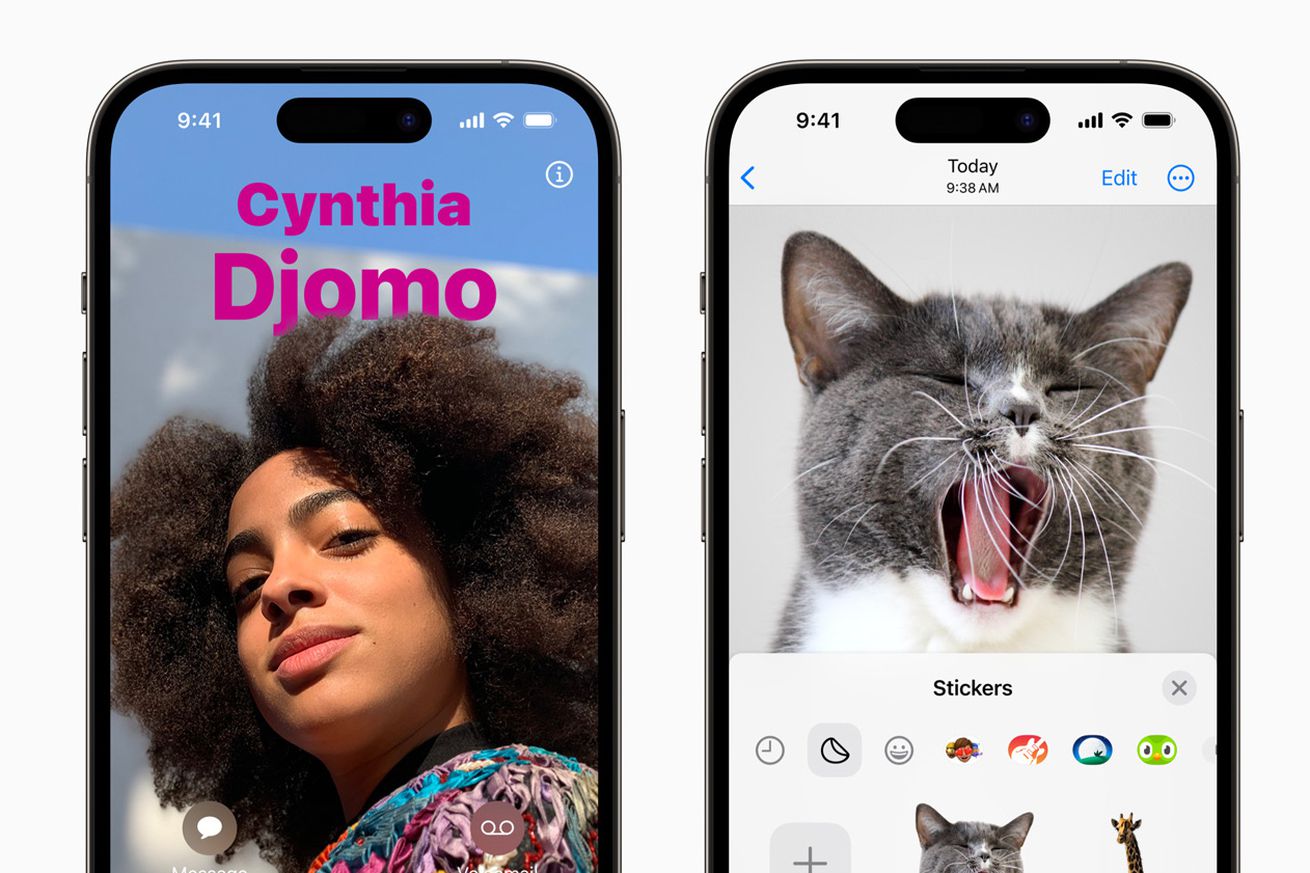
The green bubble problem is about to get even worse
Apple has spent years slowly making green bubbles feel like a worse kind of message — no typing indicators, tiny photos, no end-to-end encryption — but those constraints have always been limited to conversations in Messages; use any other app on your iPhone, and there’s generally parity with Android. But with iOS 17 later this year, Apple will expand those platform differences to phone calls, adding a big, splashy sign that your friend or family member bought the wrong phone.
The biggest change is thanks to Apple’s new Contact Poster feature for phone calls, one of Apple’s banner improvements for iOS 17. When you set a Contact Poster, you choose a photo of yourself that fills an iPhone’s entire screen along with the font that displays your name. The vibe is very similar to the customizable lock screens added with iOS 16. Then, when you call someone, your personalized contact card takes over the screen of their phone instead of the large blank page that appears today. (Notably, you can limit sharing to contacts only or require iOS to ask if you want to share it.)
Sounds useful, right? It’s kind of like having a nice profile pic on a social network, which can actually be pretty important. I suspect you generally don’t trust the people without a profile picture on Twitter or Instagram. And since Contact Posters are compatible with Apple’s CallKit tools for developers, it probably won’t just be Apple’s phone app that uses them.
However, there’s no indication of this feature being offered cross-platform, so if you don’t see one when somebody calls you, that’s an immediate clue that the person might be a random person, a spammer, or — gasp! — not using an iPhone. (Though if someone doesn’t have a Contact Poster that you think must have one, you can make Contact Posters for other people in your contacts.)
Contact Posters will also show when you swap contact info between iPhones using the new NameDrop feature. Granted, it’s not clear if anyone will actually use NameDrop, but if it does gain some traction, you’re going to look pretty uncool at the bar if you aren’t on a phone that can use it.
That’s how Apple is expanding green bubble problems beyond the typical green bubbles. But iOS 17 will make iMessages even worse for Android users, too. We already know that iPhones will have better tools for group chats that (so far) aren’t available to Android users. But Apple is also working on a secret weapon that could turn into a tool for ultra iPhone FOMO: stickers.
Yes, I know. Who uses stickers? I don’t, but with iOS 17, I might. I really like that you’ll be able to drop any normal emoji as a sticker, which means you’ll be able to use way more emoji as reactions. (Finally!) And with the ability to make your own stickers from photos, I can imagine group chats filling up with their own meme-y and jokey stickers like what you might already see with custom emoji in Slack and Discord.
Maybe these changes won’t make a difference. Who makes phone calls anymore, anyway? And as excited as I am about stickers, I’m not convinced they’re going to catch on. But if iPhone users take a liking to these new features, it’ll be yet another way Apple creates even more space between iPhone users and Android users.
Apple has shown no interest in making iOS friendlier to green bubbles: it hasn’t caved to Google’s pleas to adopt RCS, and CEO Tim Cook would rather you just buy an iPhone. Based on these new features shown for iOS 17, the company seems happy to further that divide.

